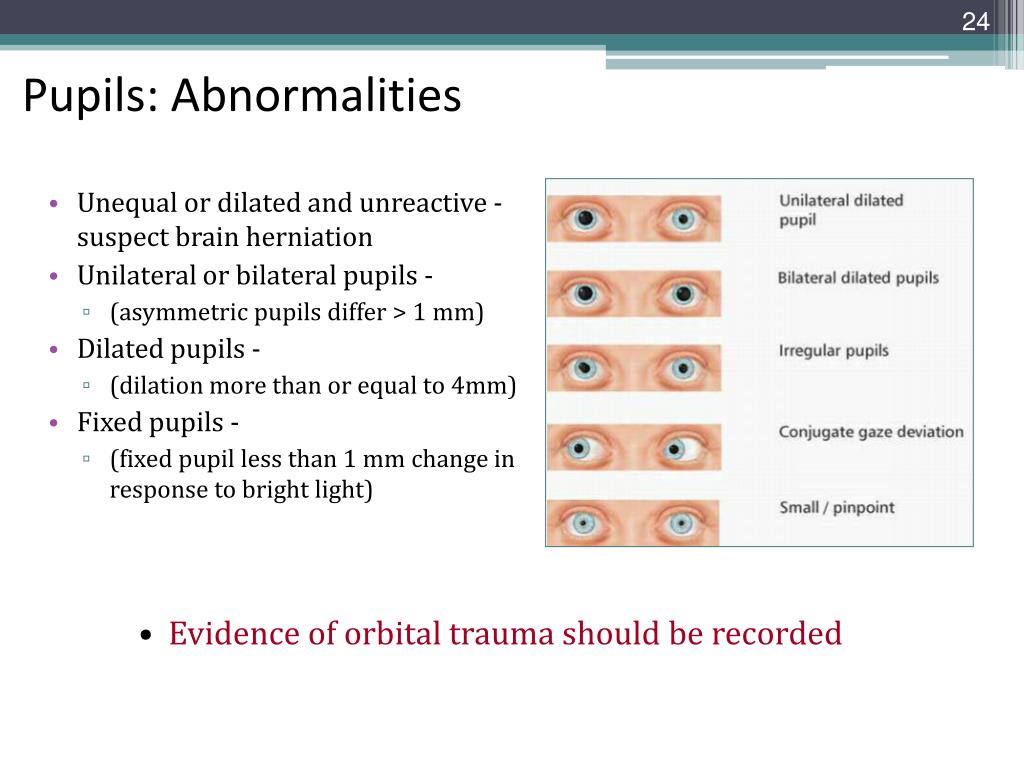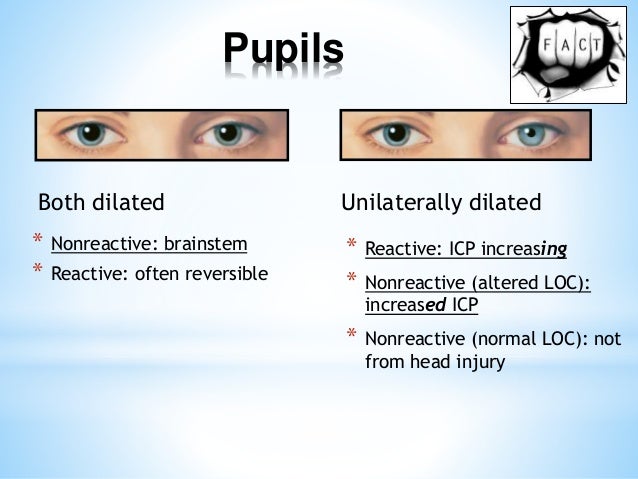

This consecutive series consisted of 99 patients (51 female, 48 male), mean age 48.5 years (range 0.2–87 years) presenting with or developing unilateral or bilateral FDPs due to an intracranial mass lesion. Therefore, the goal of this study was to provide additional data for decision making in the treatment of patients presenting with FDPs due to cerebral herniation. With socioeconomic aspects and limited resources in mind it would be helpful to know more about predictive factors for the outcome of patients with FDPs. Moreover, the impact of different underlying causes is unclear-for example, trauma, stroke, or FDP occurring after elective intracranial surgery, the FDP indicating rebleeding or postoperative brain oedema. Although prognostic factors after severe head injury have been widely studied, 5 14-16 there is less information in the literature on the efficacy of neurosurgical therapy of any kind on outcome in the presence of FDPs. On such occasions the pupillary finding may be the only reliable symptom to be reported. The situation is even more difficult if the neurosurgeon is contacted by telephone from a distant hospital with limited diagnostic resources. The finding of unilaterally or bilaterally fixed and dilated pupils (FDPs) indicates an emergency situation, and decisions on diagnostic and therapeutic procedures are to be made quickly, mainly on the basis of the personal experience of the neurosurgeons on duty. On admission to hospital most of these patients are therefore not fully assessable, so that pupillary examination remains a major tool for clinical evaluation. 13ĭue to modern emergency guidelines nearly all patients with a history of head trauma or stroke with severe impairment of consciousness are sedated, intubated, and ventilated at the emergency site. 6-12 A recently suggested alternative or additional mechanism for mydriasis and brain stem symptomatology may be brain stem ischaemia. 1-5If not caused by local trauma or drug action, this symptom indicates injury or compression of the third cranial nerve and the upper brain stem, mainly caused by an extending intracranial mass lesion or by diffuse brain injury. The prognosis of patients with FDPs after trauma, stroke, and previous elective intracranial surgery is similar.įixed and dilated pupils in comatose patients are well known to be related to a poor prognosis, especially when present bilaterally. Surgical evacuation of an intracranial mass, unilateral FDPs, early intervention, and younger age are related to better chances of survival or recovery. Of these survivors 42% had a favourable outcome.ĬONCLUSION Bilateral restoration of pupillary reactivity shortly after therapy is crucial for survival. If both pupils became reactive on therapy, the chance of survival was 62%. No patient survived better than a vegetative state, if previous FDPs did not become reactive shortly after therapy. Patients with a shorter delay from FDPs to intervention had a better chance of recovery after trauma and previous intracranial surgery (p<0.05). Patients in whom an intracranial mass was removed surgically had a 42% survival rate, compared with 8% with conservative treatment (p<0.01). Age did not correlate with survival, but younger survivors had a significantly better outcome. Unilaterally FDP was associated with a better chance of survival (46% v 13% p<0.01).

No differences in outcome were found between trauma, stroke, and postelective surgery groups.

In 15% outcome was unfavourable (GOS 2 and 3), and in 10% favourable (GOS 4, 5) at 24 month follow up. Outcome was classified according to the Glasgow outcome scale (GOS). Appropriate therapy was performed depending on the CT findings. METHODS Ninety nine consecutive patients who presented with or developed one or two FDPs, were split into three groups according to the respective aetiology: 46 patients had a trauma, 41 patients a stroke (subarachnoid or intracerebral haemorrhage), and 12 patients had undergone previous elective intracranial surgery.

OBJECTIVES To clarify whether different causative events (trauma, stroke, intracranial surgery), time of intervention, and treatment mode influence outcome, patients with fixed and dilated pupils (FDPs) in a prospective neurosurgical series were evaluated.


 0 kommentar(er)
0 kommentar(er)
